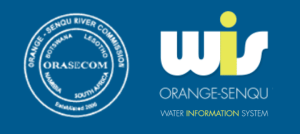Overview and Purpose
In their meeting in 2005 the Ministers responsible for water in the riparian States of the Orange-Senqu River basin have recognised the need for formal guidance for communication and collaboration on transboundary environmental assessment in the context of the ORASECOM Agreement. Such guidance would, among with other provisions, enable active stakeholder participation in planning, development and conservation of water resources at the basin scale.
These recommendations are intended to:
- Highlight issues of concern in the basin, especially how transboundary impacts on the river system and associated habitats could foreclose future livelihood and development opportunities.
- Provide guidance on how transboundary impacts should be assessed, using SEA and EIA tools.
- Advise on how to conduct transboundary consultation in the context of the notification requirements.
These recommendations have been developed in the specific context of ORASECOM and are thus geared towards the Orange-Senqu River basin and the water-related issues of that basin. Details on institutional arrangements are linked to the ORASECOM Agreement and ORASECOM structures. However, they could be expanded to a broader geographic or thematic context at a later stage.
Funding Organization(s):
Global Environment Facility through United Nations Development Programme
Reports:
- Malzbender, D, et al. 2011. Transboundary EIA guidelines for ORASECOM: Scoping paper. Technical Report Number 8.
- Tarr, P, et al. 2011. Transboundary environmental assessment guidelines for ORASECOM: Discussion materials for the regional consultation. Technical Report Number 13.
- Tarr, P, et al. 2013. Environmental assessment in the transboundary context of the Orange–Senqu River basin: Recommendations of the ORASECOM Council. Technical Report Number 14.
